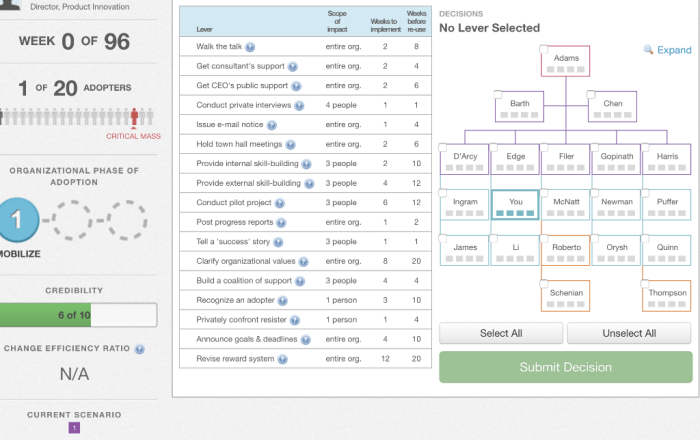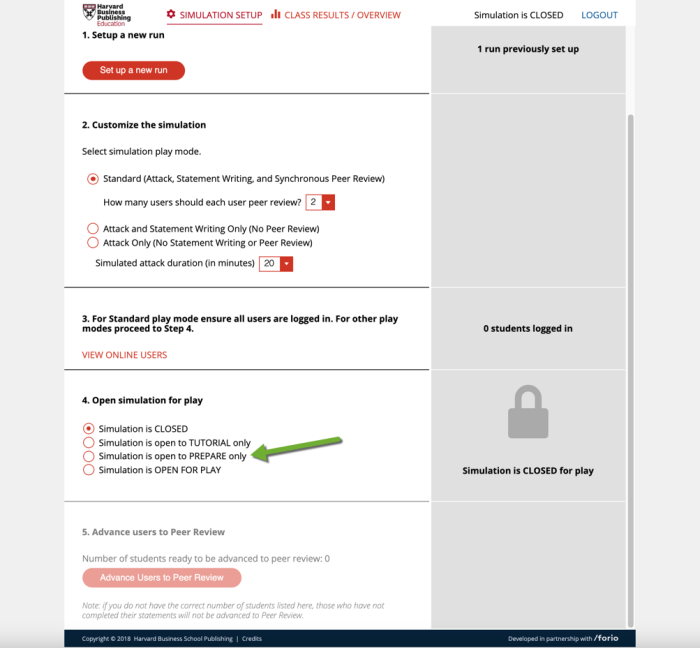Discover the secrets to running a successful food truck with our in-depth Harvard Food Truck Simulation Answers. This comprehensive guide provides expert insights, proven strategies, and data-driven analysis to help you optimize your menu, pricing, location, and marketing for maximum profitability.
From understanding key performance indicators to navigating competition and seasonality, our guide empowers you with the knowledge and tools to thrive in the competitive food truck industry.
Background of Harvard Food Truck Simulation

The Harvard Food Truck Simulation is a business simulation designed to teach students about the challenges of running a food truck business. The simulation was created by Professor Michael Porter and his team at the Harvard Business School.
The objectives of the simulation are to:
- Teach students about the key elements of a successful food truck business.
- Provide students with an opportunity to apply their knowledge in a realistic setting.
- Help students develop their decision-making and problem-solving skills.
Simulation Design and Methodology
The simulation is played in teams of 4-5 students. Each team is given a budget of $10,000 to start their food truck business. Teams must then make decisions about the type of food to sell, the location of their truck, and the pricing of their menu items.
The simulation is played over a period of 12 weeks. Each week, teams must submit a financial report to the professor. The financial report includes information about the team’s sales, expenses, and profits.
At the end of the simulation, the team with the highest profits wins.
Key Performance Indicators (KPIs) and Metrics: Harvard Food Truck Simulation Answers
In the Harvard Food Truck Simulation, performance is evaluated using a set of Key Performance Indicators (KPIs) and metrics that measure various aspects of the food truck’s operations. These KPIs help track the effectiveness and efficiency of the business and identify areas for improvement.
It is crucial to track and analyze these metrics regularly to gain insights into the performance of the food truck and make informed decisions. By monitoring these KPIs, managers can identify trends, evaluate the impact of changes, and optimize the food truck’s operations to maximize profitability and customer satisfaction.
KPIs and Metrics Used in the Simulation
- Revenue:Total amount of money earned from food sales.
- Cost of Goods Sold (COGS):Direct costs associated with food preparation, including ingredients and packaging.
- Gross Profit:Revenue minus COGS, which indicates the profit margin on food sales.
- Net Profit:Gross profit minus operating expenses, including labor, rent, and utilities.
- Customer Satisfaction:Measured through customer feedback and reviews, which reflects the quality of food and service.
- Efficiency:Measures such as order processing time and food preparation speed, which indicate the operational efficiency of the food truck.
Factors Influencing Simulation Outcomes

The Harvard Food Truck Simulation is a complex system with multiple factors influencing its outcomes. These factors can be broadly categorized into three main groups: menu selection and pricing strategies, location and marketing, and competition and seasonality.
Menu Selection and Pricing Strategies
The menu and pricing strategies adopted by the food truck have a significant impact on its profitability. The selection of menu items should consider factors such as customer preferences, food costs, and preparation time. The pricing strategy should be designed to maximize revenue while also ensuring that customers perceive the food truck as offering good value for money.
Location and Marketing
The location of the food truck and the marketing strategies employed to attract customers are crucial factors in determining its success. The location should be carefully chosen to ensure that the food truck is visible to potential customers and has access to a sufficient number of customers.
Marketing strategies should be tailored to the target audience and should effectively communicate the value proposition of the food truck.
Competition and Seasonality
The level of competition in the food truck market and the seasonality of the business can also impact its outcomes. Food trucks operating in highly competitive markets may need to differentiate themselves through unique menu items or innovative marketing strategies.
Seasonality can affect the availability of ingredients and the demand for certain menu items, which can impact the profitability of the food truck.
Strategies for Optimization
Optimization is crucial for maximizing revenue and profitability in the food truck industry. Here are strategies to optimize menu design, pricing, target customer selection, and marketing, as well as minimizing competition.
Menu Design and Pricing
A well-crafted menu and pricing strategy can attract customers and increase profitability. Consider the following:
- Keep it concise:Offer a limited menu that focuses on a few high-quality items.
- Use descriptive language:Make your menu items sound appealing and mouthwatering.
- Price competitively:Research similar food trucks in your area to determine appropriate price points.
- Offer value:Ensure that your prices are commensurate with the quality and quantity of food offered.
Target Customer Selection and Marketing
Identifying and targeting the right customers is essential for success. Here’s how:
- Define your target audience:Determine the demographics, interests, and preferences of your ideal customers.
- Use social media and online marketing:Engage with potential customers on social media platforms and use targeted online advertising.
- Offer incentives:Run promotions, offer discounts, and implement loyalty programs to attract and retain customers.
- Build relationships with local businesses:Partner with nearby businesses to cross-promote and offer joint promotions.
Minimizing Competition and Maximizing Profitability
Minimizing competition and maximizing profitability are key objectives for any food truck. Consider these strategies:
- Identify underserved areas:Research potential locations that have limited food truck competition.
- Differentiate your menu:Offer unique and innovative menu items that set you apart from competitors.
- Negotiate favorable lease terms:Secure affordable parking spaces and negotiate flexible rental agreements.
- Control expenses:Monitor operating costs and identify areas for cost reduction without compromising quality.
Data Analysis and Interpretation

The Harvard Food Truck Simulation incorporates a comprehensive suite of data analysis methods to evaluate the effectiveness of different operating strategies. These methods provide valuable insights into the key performance indicators (KPIs) and metrics that drive food truck profitability and customer satisfaction.
The simulation utilizes both quantitative and qualitative data analysis techniques to assess the impact of various factors on the food truck’s performance. Quantitative methods, such as statistical analysis and regression modeling, are employed to identify trends and relationships between variables.
Qualitative methods, such as customer feedback analysis and market research, are used to gather insights into customer preferences and market dynamics.
Data Analysis Methods
- Statistical Analysis:Descriptive statistics, such as mean, median, and standard deviation, are used to summarize the data and identify patterns. Inferential statistics, such as t-tests and ANOVA, are employed to test hypotheses and determine the significance of differences between groups.
- Regression Modeling:Multiple regression analysis is used to identify the relationships between independent variables (e.g., price, location, menu items) and dependent variables (e.g., revenue, customer satisfaction). This technique helps to determine the relative importance of each factor and predict the impact of changes in operating strategies.
- Customer Feedback Analysis:Customer surveys and online reviews are analyzed to gather feedback on food quality, service, and overall experience. This data provides valuable insights into customer preferences and areas for improvement.
- Market Research:Market research techniques, such as competitive analysis and demand forecasting, are used to understand the competitive landscape and identify potential opportunities for growth.
Significance of Results
The results of the data analysis provide valuable insights into the factors that influence food truck profitability and customer satisfaction. By identifying the key drivers of success, food truck operators can make informed decisions about their operating strategies. For example, the simulation may reveal that offering a wider variety of menu items or operating in a high-traffic location can significantly increase revenue.
Additionally, the analysis can help to identify areas for improvement, such as improving customer service or reducing operating costs.
The implications of the results extend beyond the simulation itself. By understanding the factors that drive food truck success, operators can apply these principles to their real-world operations to improve their performance and increase profitability. The data analysis methods employed in the simulation provide a valuable framework for evaluating the effectiveness of different strategies and making data-driven decisions.
Additional Considerations

The Harvard Food Truck Simulation offers valuable insights into the complexities of operating a food truck. However, it is essential to acknowledge its limitations and assumptions to ensure appropriate interpretation and application of the results.
Limitations, Harvard food truck simulation answers
- Simplified Environment:The simulation operates within a controlled environment, potentially overlooking real-world factors such as competition, weather conditions, and unexpected events.
- Fixed Parameters:The simulation’s parameters, such as menu items, prices, and operating hours, are predetermined, limiting the exploration of alternative scenarios.
- Limited Data Collection:The simulation collects a finite set of data points, which may not fully capture the nuances of food truck operations.
Areas for Further Research and Analysis
The simulation provides a foundation for further research and analysis to deepen our understanding of the food truck industry:
- Longitudinal Studies:Tracking food truck performance over an extended period can reveal trends and identify factors contributing to success or failure.
- Geographic Expansion:Exploring different geographic markets with varying demographics and competition levels can provide insights into location-specific challenges and opportunities.
- Consumer Behavior Analysis:In-depth studies of consumer preferences, ordering patterns, and satisfaction levels can guide food truck operators in tailoring their offerings and marketing strategies.
Insights into the Broader Food Truck Industry
The simulation’s findings resonate with the broader food truck industry, highlighting the following challenges and opportunities:
- Intense Competition:The food truck industry is characterized by fierce competition, requiring operators to differentiate their offerings and build a loyal customer base.
- Regulatory Hurdles:Food trucks face various regulations, including health inspections, parking restrictions, and licensing requirements, which can impact their operations.
- Seasonal Variability:Food truck revenue can fluctuate depending on weather conditions and seasonal events, necessitating adaptability and strategic planning.
- Innovation and Technology:Food trucks are embracing technology to streamline operations, enhance customer engagement, and optimize efficiency.
FAQ Insights
What are the key performance indicators (KPIs) used in the Harvard Food Truck Simulation?
The primary KPIs used include revenue, profit margin, customer satisfaction, and employee satisfaction.
How does menu selection impact profitability in the simulation?
Choosing a menu that aligns with customer preferences and market demand can significantly increase profitability by maximizing sales and minimizing waste.
What strategies can be used to optimize location and marketing for a food truck?
Identifying high-traffic areas, leveraging social media and online advertising, and partnering with local businesses can help attract customers and boost sales.